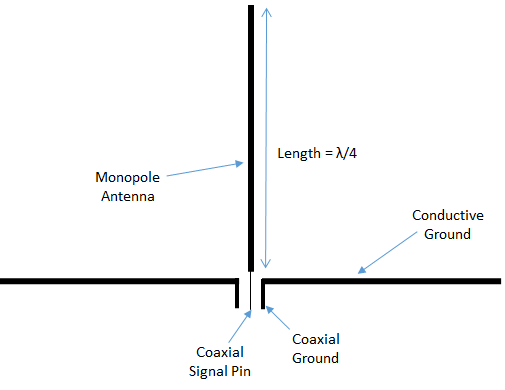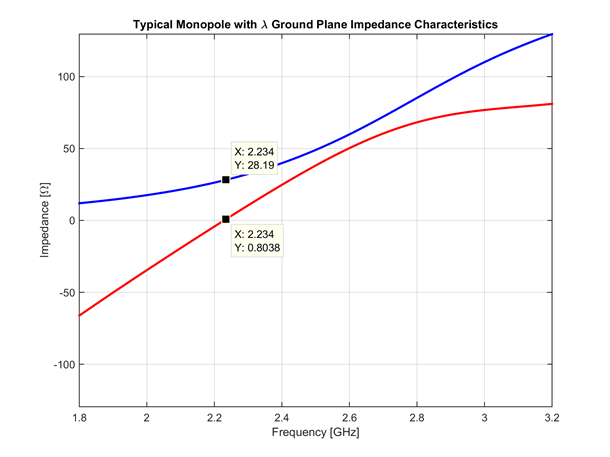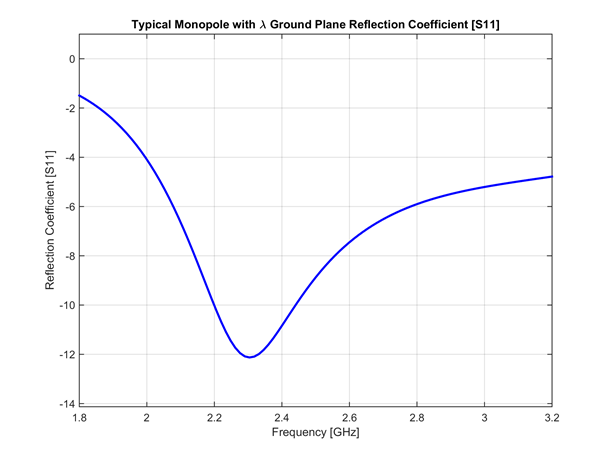(Normal to Monopole) | |||||
The monopole antenna is an common antenna that is often used on vehicles and other areas were a large conductive flat area is present (“ground plane”). The standard monopole antenna measures 1/4 wavelength in height (λ/4); however, this antenna must be placed on to a large conductive surface to function properly.
The standard monopole antenna has a slanted “doughnut” shaped pattern (click to rotate 3D image below) which is linearly polarized along the length of the monopole. The slant of the “doughnut” shaped pattern changes as the size of the ground plane changes. The gain of the monopole antenna also decreases as the size of the ground plane decreases.
A ground plane which is λ/2 in size will have a pattern closely resembling that of a dipole antenna. The gain changes depending on the size of the ground plane: 2dBi for a λ/2 ground plane, 3dBi for a 2λ ground plane, 5dBi for an infinite ground.
Rotate Image by clicking on the image and moving the mouse
In order to obtain this pattern shape a circular ground plane of radius (λ/2) should be used.
The natural input impedance of a monopole antenna is have that of a dipole antenna measuring 36.5Ω. However, this impedance is also directly effected by the size of the ground plane used. Below is the standard input impedance of a thin monopole antenna centered at 2.45GHz which uses a ground plane of radius λ/2.
A general rule is the thickness of the monopole antenna determines the bandwidth of the antenna. For a very thin antenna the bandwidth will usually be around 5% and as the thickness increases, bandwidths above 15% are obtainable. For a standard monopole the thickness should be much much less than the length of the antenna. The bandwidth changes because as the monopole increases in width the slope of the imaginary impedance decreases.
The 50Ω bandwidth of this 2.45GHz thin monopole antenna is shown below. Slightly more bandwidth is obtainable when a 36.5Ω feed line is used.
General Facts:
- Length of λ/4
- Slanted Omni directional pattern normal to the antenna
- Linear Polarization
- 2 – 5dBi Gain
- Impedance 36.5Ω (can be fed with 50Ω with a decrease in bandwidth)
- Ground plane is needed for antenna to be effective
- Size of ground plane determines pattern shape and gain
Design Guidelines:
- Decrease monopole length to increase the resonant frequency
- Increase conductive ground plane size to increase gain.



